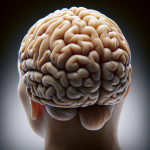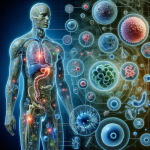
Funding Cuts Threaten Federal Anti-Smoking Initiatives
The restructuring of federal budgets by the Department of Health and Human Services (HHS)
has led to substantial slashes in funding, directly affecting anti-smoking measures. Such reductions include the closure of the Centers for Disease Control and Prevention’s (CDC) Office on Smoking and Health (OSH), which experts in public health fear could result in an increase in tobacco usage and related chronic illnesses.
Significant Setbacks for Anti-Tobacco Efforts
Federal initiatives have been instrumental in the decrease of smoking and vaping occurrences, propelled by hefty investments in public awareness campaigns and smoking cessation support. Yet, the policies introduced by Health Secretary Robert F. Kennedy Jr. appear to undercut these very initiatives that contributed to the decline.
The OSH was pivotal in identifying the link between vaping and severe lung injuries in 2019, acting as a foundational element in the fight against tobacco. It also supplied vital support to the National and State Tobacco Control Program, which assists with tobacco reduction strategies nationwide. With the OSH dismantled, the future of these programs is uncertain.
The FDA’s Center for Tobacco Products (CTP) is another entity experiencing manpower reduction, despite being crucial in enforcing advertising limits and health warnings on tobacco items. Despite these developments, a representative from HHS declared the agency’s dedication to combating chronic conditions, signaling that the CDC’s smoking cessation aid would persist.
The Fallout for Quitlines and Public Health Initiatives
The North American Quitline Consortium (NAQC) claims to have assisted over 175,000 smokers quit tobacco use within two years, with quitlines receiving more than 1.2 million calls. It is important to note that a considerable portion of these quitlines’ budgets derive from the CDC. Thomas Ylioja, PhD, MSW and NAQC head, voiced concern about the potential reductions in services or the possibility of quitlines ceasing operations without CDC’s financial backing.
Quitlines deliver impressive results with approximately 35% of participants quitting smoking permanently, in contrast to the 7% success rate among those who attempt quitting on their own. The reduction in funding places not only adults but also the younger demographic at risk, considering that 74% of the quitline participants are youths attempting to cease vaping or e-cigarette use.
Endurance and Resourcefulness in the Face of Budget Cuts
The recent budgetary cuts present significant obstacles for the ongoing battle against tobacco consumption and could have serious implications for public health, especially for those most at risk. Concerns have been raised regarding the outreach and accessibility of support services, such as 800-QUIT-NOW, in the absence of a centralized effort for tobacco cessation.
Nevertheless, HHS maintains that anti-smoking campaigns like Tips From Former Smokers will proceed at least until September. Additionally, despite funding challenges, individuals trying to quit tobacco still have access to support through Smokefree.gov and 1-800-QUIT-NOW, which continue to be vital resources in the journey toward overcoming nicotine dependency.








